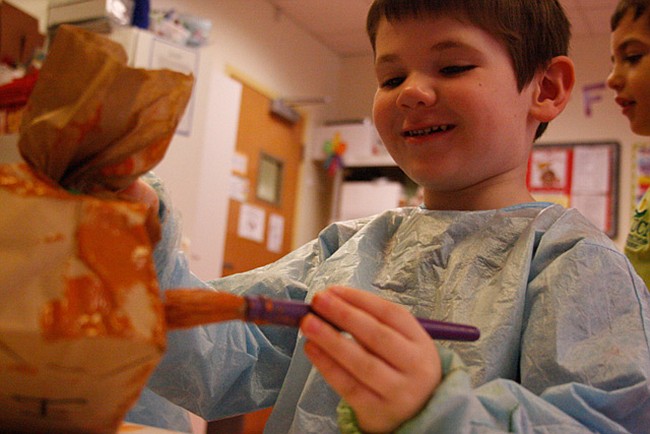- April 26, 2024
-
-
Loading

Loading

Learning through the arts is not a luxury; it’s a necessity if we are to ensure the success of our students in the 21st century. When a group of international CEOs was asked to list the qualities they identified as most important for 21st century leaders, No. 1 on that list was creativity. Not work ethic or experience, but creativity because it encompasses using a logical thought process, creative problem solving skills and higher order thinking, all things regularly taught and encouraged in an arts based curriculum.
In 2000, Congress enacted the Goals 2000: Educate America Act, which identified the arts for the first time in federal policy as part of the core curriculum. Why then are visual arts, music and theater programs always first on the chopping block when schools have to make budget cuts?
Twenty-eight states require some study of the arts for high school graduation; yet the arts are still considered an elective, an afterthought, when policy makers write curriculum and strategies to advance the rigor and success of our 21st century school classrooms. Thousands of school-based arts programs have demonstrated beyond question that the arts not only bring coherence to an often-fragmented educational approach but through the arts we find student performance in all disciplines becomes enhanced. Visual arts, music and theater teachers daily ask their students to engage in learning activities that require use of higher-order thinking skills like analysis, synthesis and evaluation. Students of the arts continue to outperform their non-arts peers on the Scholastic Assessment Test. In 1995, SAT scores for students who studied the arts more than four years scored 59 points higher on the verbal portion and 44 points higher on the math portion than students with no coursework or experience in the arts (The College Board, profile of SAT and Achievement Test Takers, 1995).
In 2002, The Arts Education Partnership issued “Critical Links: Learning in the Arts and Student Academic and Social Development,” which summarized 62 studies. This has become one of the most recognized papers on the positive effects of the arts on cognitions, critical thinking, self worth and behavior.
In 2004, The Center for Arts Policy at Columbia College published “Putting the Arts in the Picture: Reframing Education in the 21st Century,” which emphasized a change from arts education to a more holistic approach of arts integration as “an interdisciplinary partner with other subjects.”
This was followed by a College Board report in 2008 “Arts at the Core,” from the National Task Force on the Arts in Education, citing now familiar research to “utilize arts programming as an effective tool to improve education in general and to achieve access and equity for all students”
These academic studies and research give overwhelming evidence of the connection between integrated arts curriculum and advanced student skill acquisition, achievement and knowledge that cannot be denied. But there is another side of this argument that while not academic is even more soulful and compelling than the factual data.
The arts are one of the most human of expressions. From the time we are small we love to sing, dance, draw and learn about others’ lives through drama. We are provoked and challenged through the arts. So, I invite you to think of the potential of each child, of your child, and ask yourself, why haven’t we acted on all this overwhelming and eloquent evidence? Imagination is an extraordinary human gift and, in my opinion, not something to take lightly or waste.